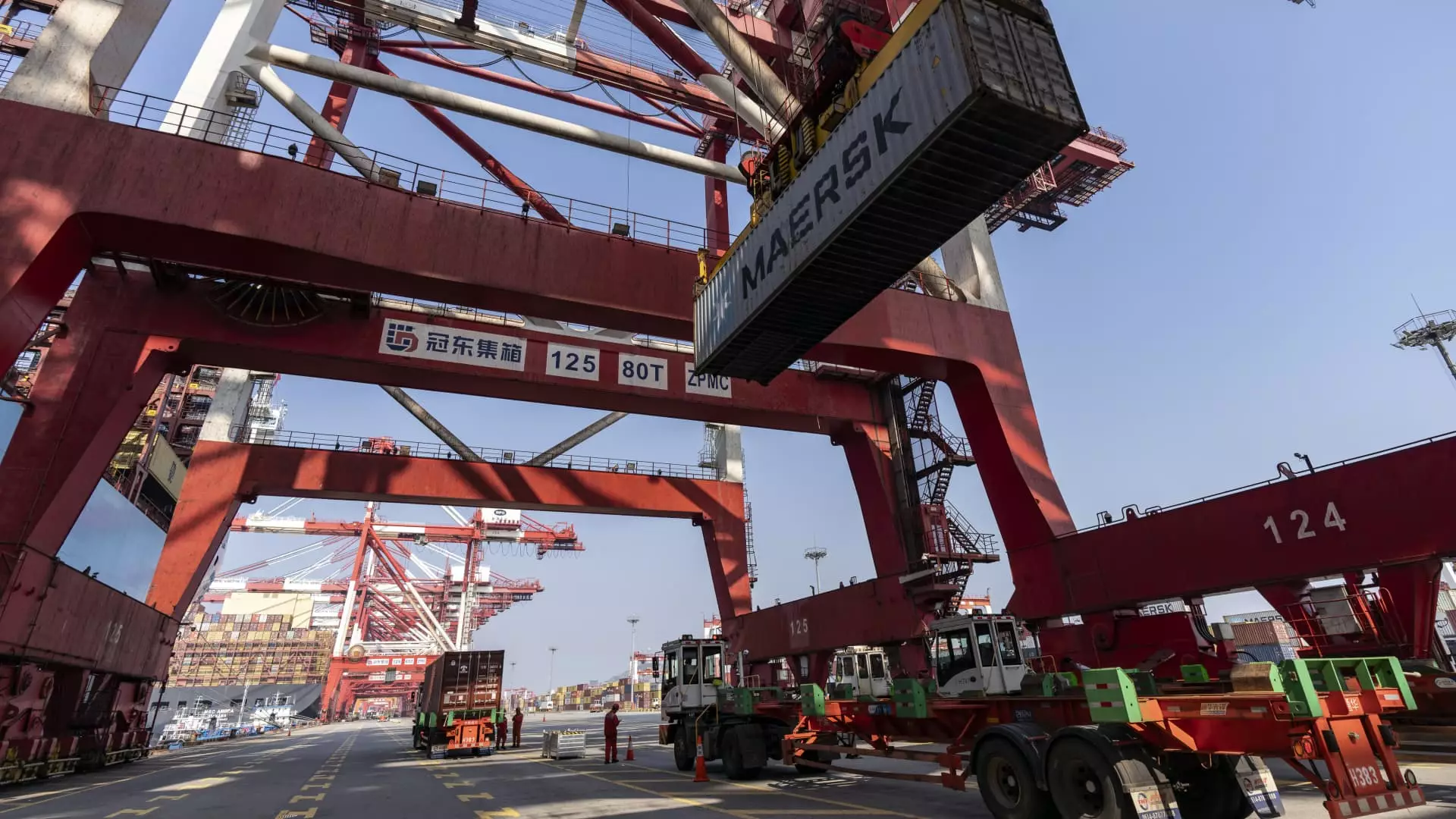September 2023 marked a notable trend in China’s economic landscape, as both exports and imports fell short of analysts’ expectations. The customs data released recently indicated a mere 2.4% year-on-year growth in exports, measured in U.S. dollars, while imports saw an even more modest increase of only 0.3%. Expectations had been set significantly higher, with predictions forecasting a 6% rise in exports and a slightly better 0.9% increase in imports for the same period. These figures raise red flags regarding the sustainability of one of the vital engines of the Chinese economy, primarily fueled by its export activities.
The current global trade climate, characterized by escalating tensions particularly with the United States and the European Union, casts a long shadow over China’s trade prospects. Recent tariff hikes imposed on Chinese exports, especially in key sectors such as electric vehicles, are expected to dampen the robust growth that China’s exports had previously enjoyed. Zhiwei Zhang, an economic expert at Pinpoint Asset Management, emphasized the need for a pivotal shift in fiscal policy to ensure future growth. The transition is crucial for counteracting the economic headwinds brought on by geopolitical frictions, signaling that more substantial fiscal measures will be necessary to stimulate trade in the near term.
When dissecting the trade data, a more nuanced picture emerges regarding China’s trading relationships. Exports to the United States, still the largest trading partner for China, increased by 2.2% year-on-year, while imports surged by 6.7%. This indicates a relative resilience in this bilateral trade relationship, even as overall export trends wane. Conversely, trade with the European Union displayed weaker performance, with a marginal 1.3% increase in exports and a 4% drop in imports—a striking example of the shifting dynamics within global trade corridors.
Interestingly, China’s interactions with ASEAN countries remained robust, with exports climbing by 5.5% and imports growing 4.2%. This diversification indicates that while traditional markets such as the U.S. and EU are facing challenges, regional partnerships are burgeoning amid global uncertainties.
Delving deeper into the sector-specific performance reveals a mixed landscape. While exports of automobiles displayed a significant year-on-year growth of 25.7%, other sectors experienced declines. Notably, items such as shoes, toys, and smartphones witnessed a downturn in export numbers. On the flip side, growth can be observed in home appliances, integrated circuits, and ships—indicative of a pivot in consumer demand and technological emphasis.
However, the domestic demand landscape appears starkly contrasting, as evidenced by a dramatic 10.7% year-on-year decline in crude oil imports. This downturn suggests a sluggish domestic market, aligned with earlier insights into consumer behavior. In response, the government has recognized the need for strategic measures, including a notable increase in soybean imports by nearly 39%, aimed at ensuring food security amidst declining internal consumption levels.
The economic stressors facing China extend beyond trade figures into the realm of inflation and consumer prices. The core consumer price index—a key indicator of economic health—rose by only 0.1% in September, marking its slowest growth since early 2021. Even significant holidays like the Mid-Autumn Festival and the Golden Week did little to bolster tourism-related prices, which fell by 2.1% year-on-year. The broader implications of these trends underscore a continuing erosion of household demand, which must be addressed for the economy to regain its momentum.
As anticipation builds for the upcoming release of third-quarter GDP data, alongside critical metrics such as retail sales and industrial production, the market remains teetering on optimism yet wary of a forthcoming economic recovery. Chinese authorities have introduced stimulus measures; however, analysts remain apprehensive regarding the lack of clarity surrounding fiscal policy details. The volatile stock market reflects these uncertainties as investors grapple with the potential outcomes of the government’s economic support strategies.
The figures released for September paint a concerning portrait of China’s economic recovery, revealing not just missed expectations in trade performance, but also deep-rooted challenges in consumer demand and international relations. As the nation aims to navigate these turbulent waters, policymakers must prioritize constructive fiscal measures to steer the economy toward stability and growth.

